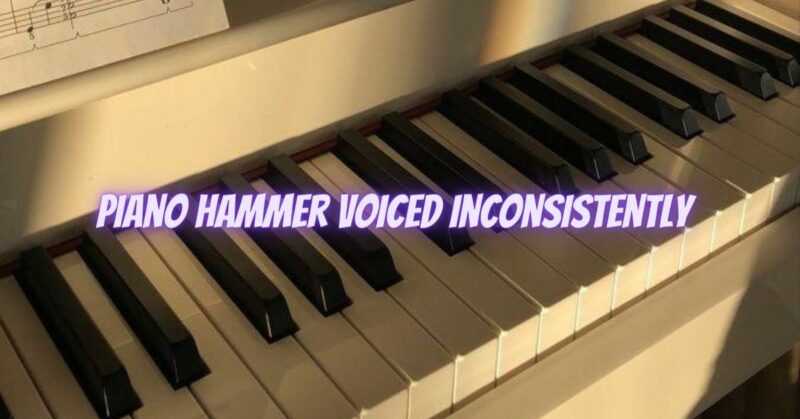Consistent voicing of piano hammers is essential for achieving a balanced and uniform sound across the keyboard. When hammers are voiced inconsistently, it can lead to a disparity in tone and responsiveness, affecting the overall musical experience. Identifying the causes and applying appropriate solutions can help improve the consistency of hammer voicing. Here are some common causes and ways to address the issue:
- Uneven Hammer Felt Density: Uneven hammer felt density is one of the most common causes of inconsistent voicing. The felt density can vary due to wear, compression, or different voicing techniques applied during previous maintenance. To resolve this, a piano technician can carefully needle or shape the hammer felts to achieve a more uniform density.
- Inconsistent Voicing Technique: Voicing is a delicate process that requires skill and experience. If the piano technician uses inconsistent voicing techniques or lacks experience, it can lead to variations in hammer response and tone. It is crucial to work with a qualified and experienced piano technician to ensure consistent voicing throughout the instrument.
- Worn Hammer Felts: As hammer felts wear over time, their tonal properties change, affecting the consistency of the piano’s sound. If the hammers are significantly worn, consider having them reshaped or replaced. Properly voicing new hammers will also help ensure consistency.
- Inadequate Regulation: Uneven key dip and height regulation can result in varied hammer strike points, leading to inconsistent tone and responsiveness. A thorough regulation of the piano action can help address this issue, ensuring that all keys have the same dip and height.
- Environmental Changes: Fluctuations in temperature and humidity can impact the felts’ density and responsiveness, leading to inconsistent voicing. Maintain a stable environment for your piano to minimize these effects.
- String Condition: Worn or unevenly stretched strings can cause the hammers to strike the strings at different points, resulting in inconsistent voicing. Regularly inspect and replace any damaged or worn-out strings.
- Hammer Alignment: Misaligned hammers can cause uneven contact with the strings, affecting both tone and response. Properly aligning the hammers will help achieve more consistent voicing.
- Hammer Hardness: Inconsistent hammer hardness across the piano can lead to variations in tone. If the hammers are too hard or too soft, voicing adjustments can be made to achieve a more balanced sound.
- Regular Maintenance: Regularly schedule piano maintenance and voicing sessions with a skilled technician to ensure the hammers remain consistently voiced over time.
Conclusion: Addressing inconsistent voicing of piano hammers requires a combination of proper regulation, voicing techniques, and regular maintenance. Working with a qualified and experienced piano technician is essential for achieving a balanced and uniform tone across the keyboard. By identifying the specific causes of inconsistency and applying appropriate solutions, you can enjoy a piano with a consistently responsive and expressive sound that enhances your musical performance.


